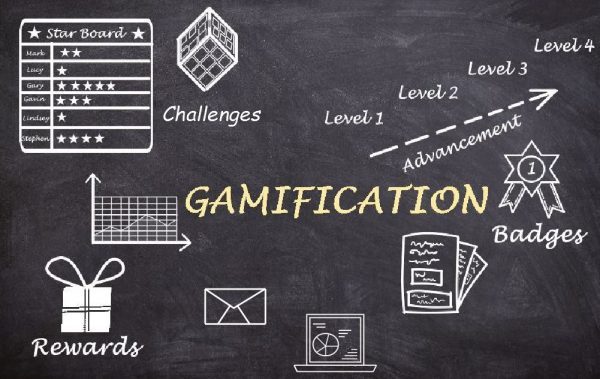In Week One, we identified our students’ assets, knowledge, and needs. We also identified the standards we would be teaching and integrating into our week-long plan and established learning objectives to master those standards. In Week Two, we built our lesson map to include interdisciplinary instruction and activities that would align with and support student learning and mastery of those objectives. All the while, we are striving to create an inclusive, supportive, and equitable learning environment for all students. This week, our task is to create multiple forms of assessments (Week Three LO 1) to track and measure student response to our UDL instruction and design a summative assessment that allows for multiple means of expression, student creativity, and technology integration, and that can be scored with a single criterion rubric that assesses the mastery of specific learner outcomes (Week Three LO 2).
Now that we have designed our unit of study and are about to create our assessments, we will pause and reflect on whether our grading practices support or inhibit our vision of creating an inclusive and equitable classroom environment that is supportive of learning. If they are not in alignment, adjust them before finishing and developing your learning map.
This discussion aligns with WLOs 1 and 2, TPE 1.7 and TPE 5.1.
Grades are the primary measure of a student’s interface with our curriculum, and our assessments quantify that access and learning. Evaluating the equity behind our grading practices ensures that they align with the intended purpose of these actions.
Instruction
In our initial post, we were to respond to the following writing prompts:
- Joe Feldman argues that traditional and inequitable grading practices send mixed messages to our students about the role of mistakes in learning. Critique your grading practices or critique your own experience as a student in a class with what he describes as the more equitable way. Do those traditional grading practices undermine equity in that classroom?
- How can we shift our grading practices from compliance and punitive punishment towards intrinsically motivated, equitable, and mastery-based learning? How can using rubrics, points (or lack thereof), and standards-based grading in your course promote more equitable student grading and learning? How will you integrate these concepts into the grading practices of your week-long learning map?
When I was growing up, I tended to learn things fairly quickly. As such, I became easily bored with classroom study and tended to miss turning in regular homework or even class itself. I always did well on tests but received average (C) or below-average grades because of this. Ultimately, I joined the army to get out of traditional school. I went to a continuation school that graded me on my current knowledge, passed with flying colors within three months, received my diploma (with honors), and was Private Frank Jamison at the ripe young age of 17.
Reflecting on my experience as a student, I realize that traditional grading practices may have been inequitable for me. While I excelled on tests, demonstrating a strong understanding of the material, my grades suffered due to my disengagement with the classroom structure, such as not turning in homework regularly or missing classes. This suggests that my grades were not solely reflective of my academic abilities but were also influenced by factors unrelated to my mastery of the content.
Considering Joe Feldman’s arguments, I see how a more equitable grading system focused on content mastery might have better served me. Such a system would have recognized my ability to grasp the material rather than penalizing me for my lack of engagement with traditional classroom expectations. It’s evident that in classrooms where traditional grading practices are prevalent, equity can be compromised, as students like me, who may have different learning styles or life circumstances, can be unfairly disadvantaged.
My experience suggests that shifting towards grading practices emphasizing mastery of the material and providing multiple opportunities for demonstrating understanding could lead to a more equitable and accurate assessment of a student’s academic abilities.
To shift our grading practices towards intrinsically motivated, equitable, and mastery-based learning, focusing on students’ understanding of the material rather than their compliance with behavioral expectations is important. Feldman (2017) emphasizes the need for grading practices that reflect a student’s academic abilities rather than factors unrelated to their mastery of content. One way to achieve this is by using clear and transparent rubrics that outline the criteria for success in a manner that students can easily understand. These rubrics can guide students in focusing on the specific skills and knowledge they need to demonstrate, as Feldman’s (2018) discussion on Grading for Equity highlights.
Additionally, implementing standards-based grading can provide a more nuanced understanding of student progress, as it assesses students’ proficiency in specific standards or learning objectives (Nampa School District, 2019). This approach allows for clearer feedback on areas of strength and areas needing improvement, aligning with the principles of equitable grading. Furthermore, minimizing the impact of behavior on grades is crucial, as Feldman (2017) points out that traditional grading practices can undermine equity initiatives by disproportionately penalizing students for non-academic factors.
Providing multiple opportunities to demonstrate learning is another key aspect, as it acknowledges that learning is a process, and students may need more than one chance to grasp the material (Feldman, 2018) fully. Encouraging reflection and self-assessment can also help students take ownership of their learning and develop intrinsic motivation (National Association of Independent Schools, 2020).
In integrating these concepts into the grading practices of a week-long learning map, we should design the map with clear learning objectives that align with the established rubrics and standards-based grading system. Daily or periodic formative assessments can allow students to demonstrate their understanding of the material and receive feedback. Opportunities for self-reflection and self-assessment at the end of the week can help students identify areas of strength and improvement. Finally, the final assessment or project for the week should allow students to demonstrate mastery of the week’s objectives, using the rubrics and standards as a guide. By adopting these strategies, we can create a more equitable and motivating learning environment that prioritizes mastery and personal growth over compliance and punitive punishment.
References
Feldman, J. (2017). Do your grading practices undermine equity initiatives? Leadership, 47(2), 8–11. https://go.openathens.net/redirector/nu.edu?url=https://www.proquest.com/trade-journals/do-your-grading-practices-undermine-equity/docview/2094375187/se-2
Feldman, J. (2018). Grading for Equity: What It Is, Why It Matters, and How It Can Transform Schools and Classrooms. Corwin Press. http://ebookcentral.proquest.com/lib/nu/detail.action?docID=6261504
Nampa School District (Director). (2019). Standards-Based Grading (Nampa School District). https://www.youtube.com/watch?v=jUFIE_85KlI
National Association of Independent Schools (NAIS) (Director). (2020). Grading for Equity: What It Is, Why It Matters, How It Transforms Schools and Classrooms. https://www.youtube.com/watch?v=bE4RmeuPT-w



